
Castle of Versailles
The Château de Versailles is a royal castle located in Versailles, France. It was built in the 17th century during the reign of Louis XIV to be the seat of royal power and the French court.
The French baroque style architecture, with French gardens designed by André Le Nôtre, makes it a legendary place of French art.
His history...
The Palace of Versailles is today a very popular tourist site, attracting thousands of visitors each year. You have been warned, no one will come away indifferent! It is considered one of the most significant examples of French art and architecture, as well as the political and cultural history of France.
The artistic style of the castle is primarily Baroque, with influences from the Renaissance and Classicism. It features works by famous artists such as Hyacinthe Rigaud, Charles Le Brun and Jean-Baptiste Colbert.
Among the most remarkable works of the castle, we can cite the Hall of Mirrors, the Hall of Mirrors, the apartments of the king and queen, as well as the French gardens, among the most beautiful we have visited.
The Hall of Mirrors is one of the most famous rooms of the Château de Versailles. It measures 73 meters long and 10 meters wide and is adorned with 17 mirrored arches, which reflect daylight from 17 opposing windows. This gallery was used for official ceremonies and public receptions at the French court.
The King's and Queen's Apartments are luxurious rooms designed to accommodate members of the royal family. The King's Apartments are adorned with works of art, precious furniture and lavish decorations, while the Queen's Apartments include bedrooms for the royal children as well as study and reception rooms.
Together, the Hall of Mirrors, the king's and queen's apartments and the French gardens of the Château de Versailles bear witness to the wealth and splendor of the French royal court at the time of Louis XIV.
Finally, the Palace of Versailles was transformed into a museum by King Louis-Philippe in 1837. The king decided to open the castle to the public to preserve its cultural heritage and to allow people to see the history of France.
Many events and parties take place there, the musical big waters of course but also in particular the galant parties resumed since 2023...
The night of August 4, 1789...
It was on this date that the representatives of the third estate declared the Declaration of the Rights of Man and of the Citizen, and the famous "Dance of the Queens", which was organized to celebrate the birth of a male heir for the French crown.
The night of August 4, 1789 marked a decisive turning point in the history of France and the world. It was a hot and turbulent evening in Paris, where political and social tensions were at their height. Representatives of the third estate gathered in the Salle des Menus Plaisirs, located in the Tuileries Palace, to discuss the political reforms necessary to face the country's economic and social challenges.
The debates were lively and passionate, with voices raised to support the different visions of a better future for France. The representatives were divided, with some advocating moderate political reform, while others demanded radical changes to overthrow the corrupt and unjust political system.
It was then that an event would change the course of history: “The rights of man and of the citizen!”. The representatives came together in this common declaration of liberty, equality and fraternity. They signed their names on this symbolic act, raising their voices to proclaim their commitment to a better future for the French people.
The night of August 4, 1789 will forever be remembered in history as a moment of unity and courage, when representatives of the third estate united to fight against injustice and oppression, and launched a movement that changed the course of history.
The architecture of the Palace of Versailles
The Palace of Versailles is a magnificent example of French Baroque architecture. This architectural style, popular in Europe from the 17th to 18th centuries, is characterized by its extravagance, grandeur, curved lines and detailed ornamentation.
Versailles was designed by the architect Louis Le Vau, who supervised the construction of the central body and the north wing. Subsequently, Jules Hardouin-Mansart was hired to expand and modify the castle according to the instructions of King Louis XIV.
Louis Le Vau, the principal architect of the castle, began work on the building in 1661. He oversaw the construction of the central body and the north wing of the castle, which are characteristic of the French classical style. The facades are relatively simple, with rectangular windows and attic roofs.
The result is a remarkable fusion of French classical architecture and Italian Baroque. The facades of the castle are decorated with sculptures, columns and decorative elements, which are particularly notable in the Hall of Mirrors. This most famous room in the Palace of Versailles is a work of art in itself, with its immense mirrors, crystal chandeliers and gilded frescoes.
And on the Garden side?
Designed by André Le Nôtre, they extend over more than 800 hectares and are made up of flower beds, fountains, ponds, sculptures, groves, paths and canals.
Le Nôtre created the gardens in a symmetrical and orderly style, with geometric flower beds and straight paths that converge towards remarkable viewpoints, such as the Apollo Basin or the Grand Canal.
The gardens are also decorated with numerous sculptures, some of which were created by famous artists such as François Girardon and Charles Le Brun. Fountains are also an important feature of the gardens, with over 50 fountains created by artists such as Jean-Baptiste Tuby and François Girardon.
The gardens were designed to be an extension of the castle, with spectacular views of the building from the paths and groves. They were created to reflect the grandeur and power of the French monarchy during the time of Louis XIV.
Note that the “rendez-vous au jardin” which celebrated its 20th edition in June 2023 offers various activities on the theme “music from the garden” will thus be offered to visitors who will be able to discover the link between music and fragrances in the heart of the Garden of the Perfumer and the gardens of Trianon.
These formal gardens are considered one of the most important examples of 17th-century gardens in Europe. They are characterized by their symmetry, their use of ponds, fountains and formal perspectives and also include flower beds, paths, groves and trimmed boxwood beds, a true marvel!
A visit itinerary among others
If you only have two hours to visit the Palace of Versailles, here is a possible itinerary to see the major works:
-
The Hall of Mirrors: This room is one of the most famous rooms in the castle, with its mirrors, chandeliers and golden frescoes. It is located in the central part of the castle and is difficult to miss.
-
The King's Apartments: This suite of rooms was used by Louis XIV and is decorated in the grandiose and opulent style of the period. The main rooms to see are the Salon de l'Œil-de-Bœuf, the King's Bedroom and the Queen's Bedroom.
-
The Royal Chapel: Located in the north wing of the castle, the royal chapel is a remarkable work of art. It is decorated with sculptures and frescoes and is considered one of the best examples of French Baroque architecture.
-
The castle gardens: If the weather permits, it is recommended to take a stroll through the castle gardens. You can see the groves, fountains and flower beds.
This itinerary is quite ambitious, so you may have to rush a bit to see everything in two hours. If you have a little more time, it is recommended to also visit the Galerie des Batailles, which contains paintings of important battles in French history, and the Throne Room, which contains the throne of Louis XIV.














Some works in light



The Grand Apartments are made up of seven rooms: the Queen's bedroom, the King's bedroom, the Council room, the Dauphine's bedroom, the Queen Mother's bedroom, the guard room and the Hall of Mirrors. Each of these rooms is decorated with elegant furniture, magnificent tapestries, paintings and other remarkable art objects.
The Queen's bedroom is the first room of the Grand Apartments. It was designed for Maria Theresa of Austria, the wife of Louis XIV. The room is decorated in a Louis XIV style, with ornate furniture and tapestries depicting the labors of Hercules. The walls are covered with blue silk, on which gold flowers are embroidered.
The King's bedroom is the main room of the Grand Apartments. It is decorated in a more masculine style, with tapestries representing hunting scenes and more imposing furniture. The King's bed is particularly remarkable, with a red velvet canopy and gold draperies. The room is also decorated with paintings representing mythological scenes and the life of Louis XIV.
The Council Chamber was used for meetings of the Council of State and royal audiences. The room is decorated with tapestries depicting the military exploits of Louis XIV and paintings depicting justice scenes. The Council table is surrounded by ornately carved chairs.
The Dauphine's bedroom was reserved for the wife of the Dauphin, the heir to the French throne. The room is decorated in a softer, more feminine style, with tapestries and paintings depicting romantic scenes. The room is also adorned with elegant furniture and fine art objects.
The Queen Mother's bedroom was the bedroom of Louis XIV's mother. The room is decorated in a more sober style, with simple furniture and tapestries in soft colors. The room is also decorated with paintings depicting scenes from the life of the Queen Mother.
The guard room was the room where the royal guards awaited orders from the King. The room is decorated with tapestries depicting military scenes and ancient weapons and armor. The room is also decorated with elegant furniture and portraits of French kings and queens.
Finally, the Hall of Mirrors is the most famous room of the Grands Appartements. It measures over 70 meters long and is decorated with mirrors and crystal chandeliers. The gallery is decorated with sumptuous paintings representing scenes from the life of Louis XIV




The Hall of Mirrors was built between 1678 and 1684 and is over 70 meters long. It is located on the first floor of the Château de Versailles, along the garden façade, and offers a breathtaking view of the château gardens.
The Hall of Mirrors owes its name to the 17 monumental mirrors that adorn its walls. These mirrors were manufactured at the Saint-Gobain Royal Mirror Glass Manufacture and are framed with gilding and marble sculptures. The mirrors were strategically placed to reflect natural light from the gallery windows, creating an extraordinary lighting effect.
The ceiling of the Hall of Mirrors is also remarkable. It is decorated with 30 paintings which represent the military and political victories of Louis XIV. The paintings were created by Charles Le Brun, the King's first painter, and his team of artists. The vibrant colors and intricate details of the paintings are truly remarkable and provide an incredible spectacle for visitors.
The walls of the gallery are decorated with Gobelins tapestries, representing scenes from the life of Louis XIV and allegories of the seasons. The tapestries were woven at the Manufacture des Gobelins, a French royal institution specializing in the production of tapestries.
In the center of the Hall of Mirrors are Baccarat crystal chandeliers, which hang from the ceiling and add even more sparkle to the room. The floors are polished marble, which adds to the elegance of the room.
The Hall of Mirrors has been the scene of many important historical events, such as the signing of the Treaty of Versailles in 1919 which ended the First World War.




The Royal Chapel of Versailles, located within the famous Palace of Versailles, is one of the most emblematic chapels in France. It was built under the direction of architect Jules Hardouin-Mansart between 1699 and 1710, during the reign of King Louis XIV, also known as the Sun King. The chapel was designed to be the place of worship for the Royal Court and is a remarkable example of French Baroque architecture.
Here are some important points to know about the Royal Chapel of Versailles:
Architecture: The Chapel of Versailles is an architectural masterpiece in the Baroque style. It is characterized by an imposing facade decorated with Corinthian columns and sculptures. The interior of the chapel is richly decorated, with a large dome, wall paintings, frescoes, and gilded decorative elements. The Royal Chapel of Versailles was where the royal family attended mass, but it also served as the setting for lavish court events and religious ceremonies. Sacred music played an essential role, and it was often accompanied by a large choir and orchestra. The Chapel of Versailles has witnessed many historic events, including the marriage of the future King Louis XVI to Marie Antoinette in 1770. It has also been the scene of many solemn religious services and official court ceremonies.

Image Gallery



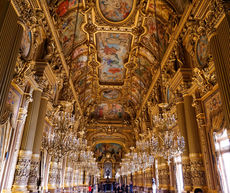


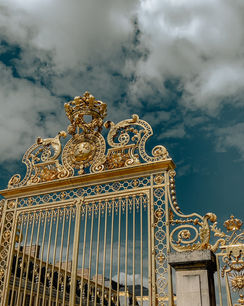

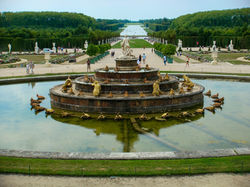










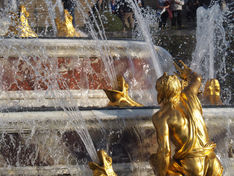
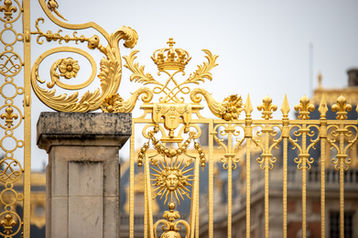
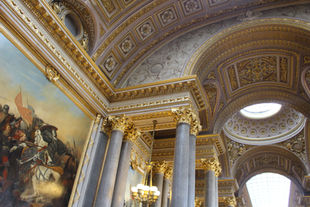
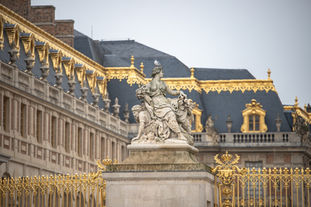

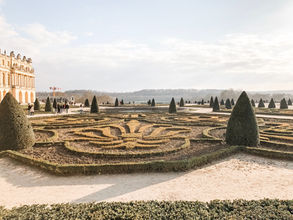
Address of the Chateau de Versailles
Place d'Armes, 78000 Versailles, France

